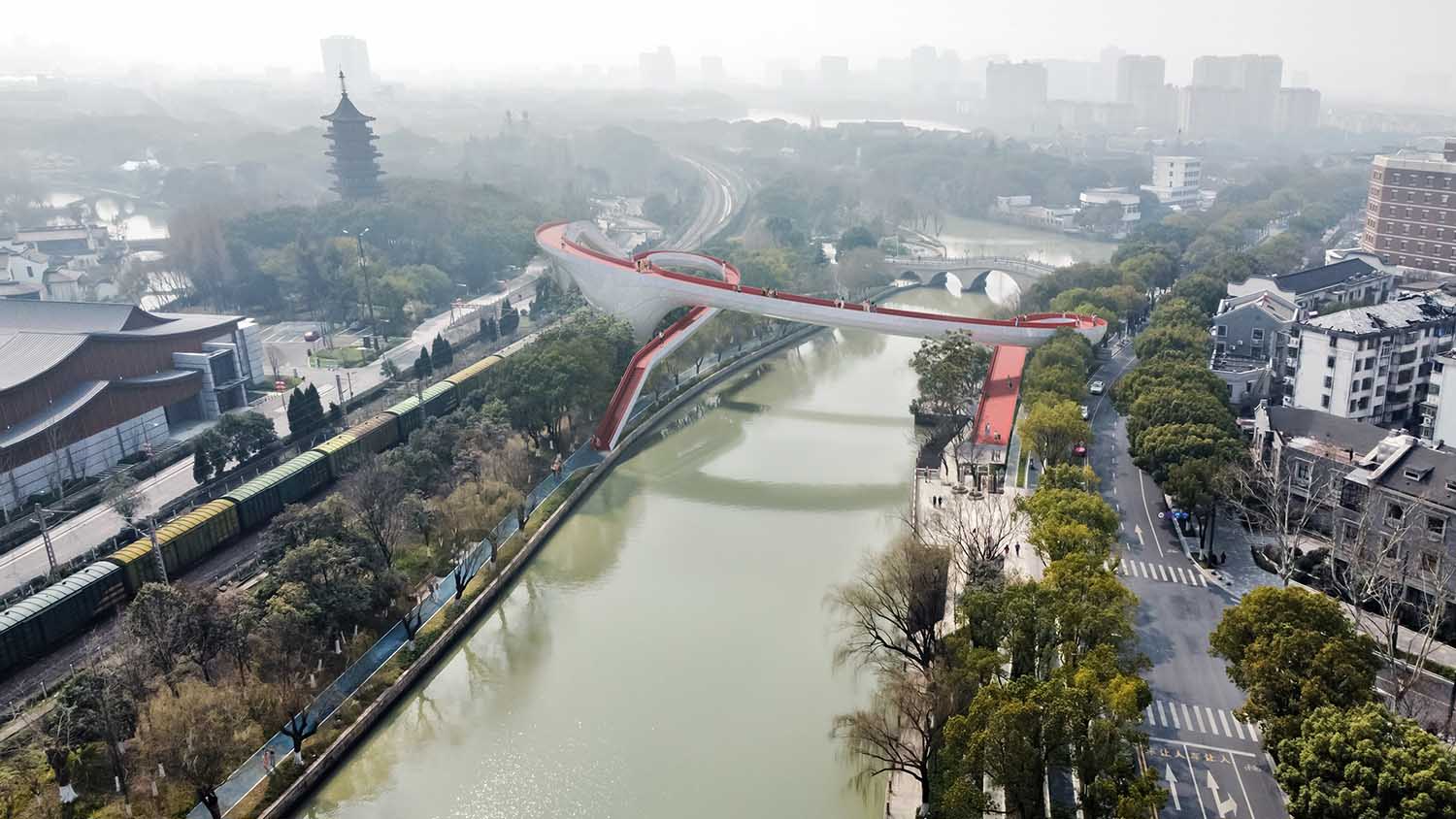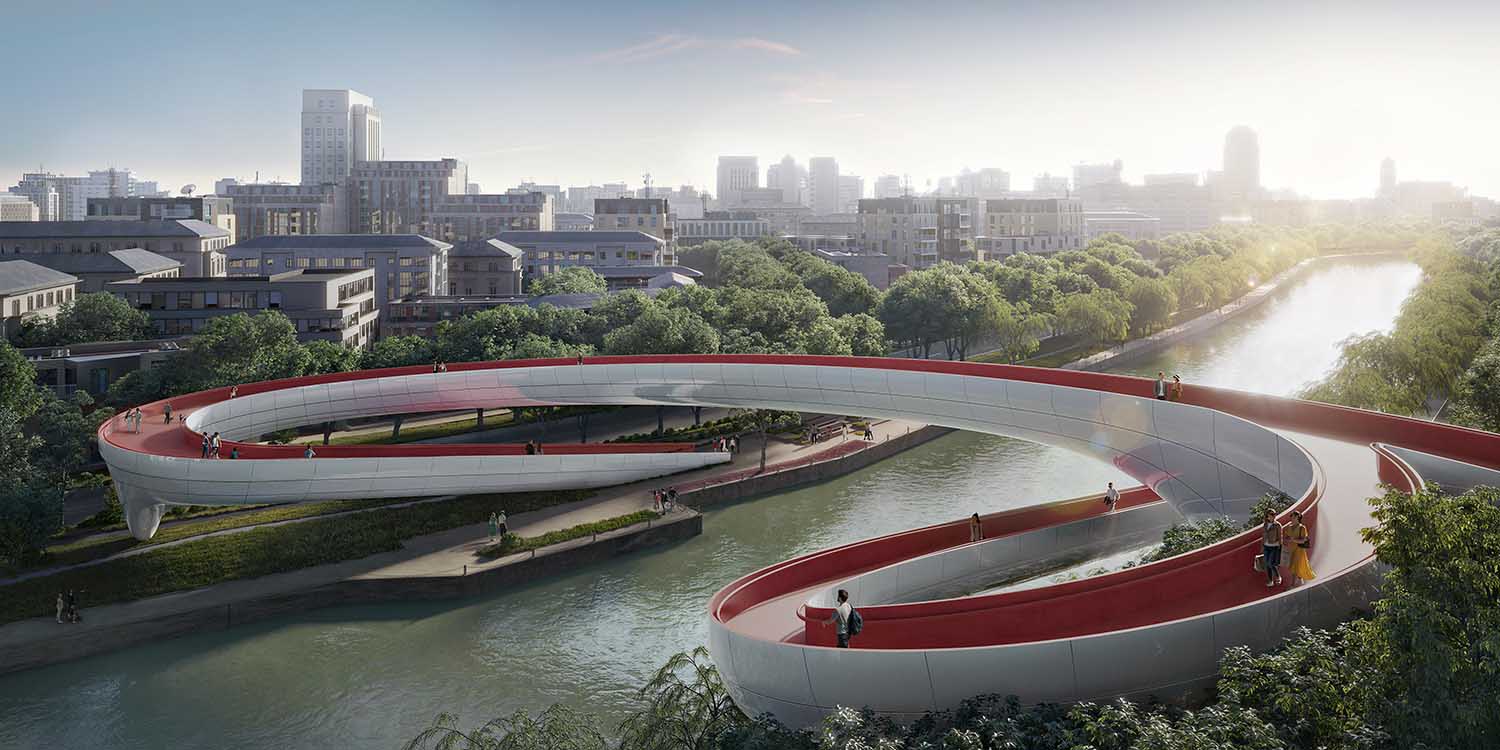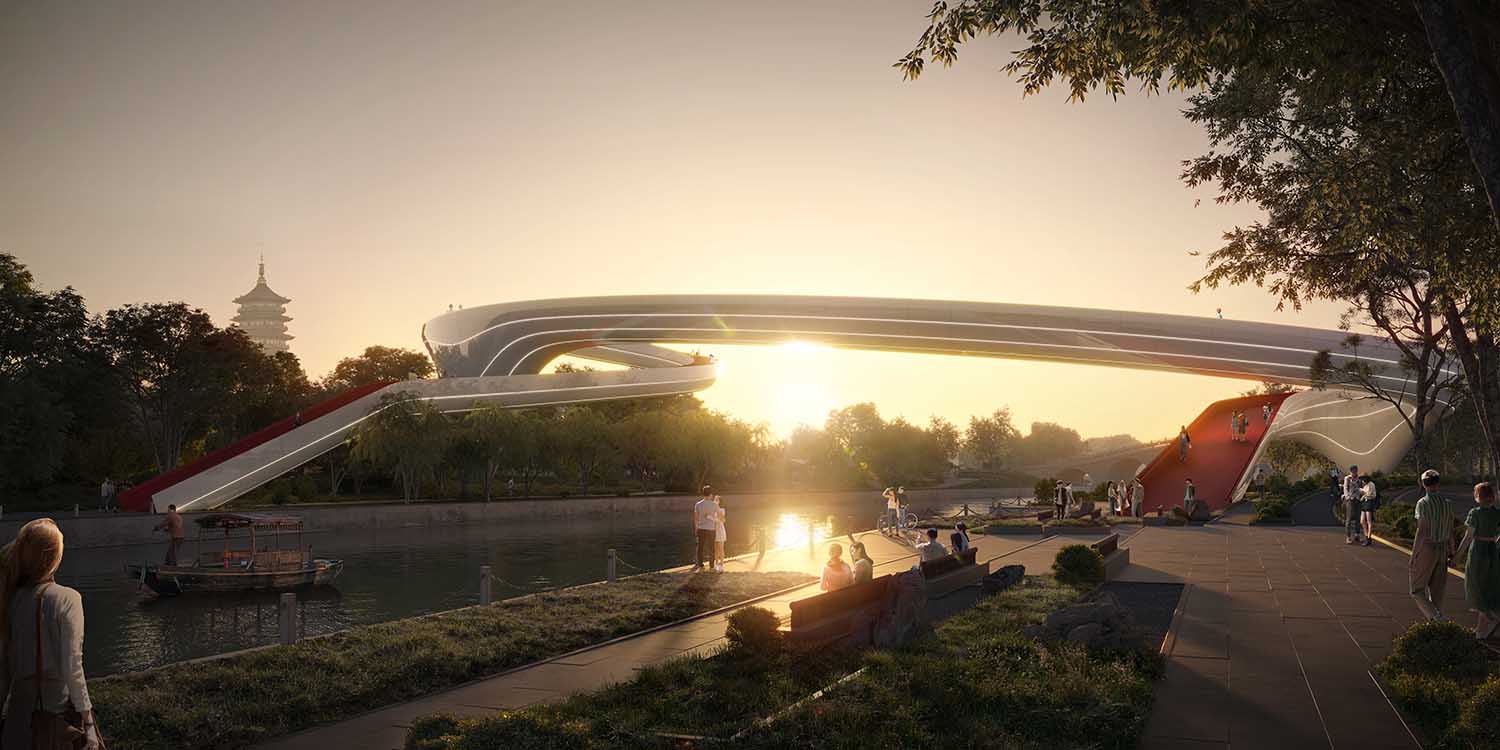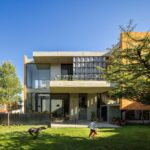
RMJM Milano unveiled their design proposal for The Red Knot, an innovative and well-thought-out pedestrian bridge in Zhejiang, China. The project has been shortlisted for the international concept design competition. The , bridge can be taken apart, rebuilt somewhere else, and then the individual parts, if they are no longer required, can be recycled or reused.
Ancient Chinese literature refers to the Zhaozhou Bridge as a “crescent moon rising from the clouds” or a “rainbow in the sky.” The Zhaozhou Bridge, with a span of 37 metres, is the world’s oldest open-spandrel arch bridge located in the Hebei Province of China. The bridge remains in use today, and the ornamental posts and railings have had to be replaced every 300 to 500 years.
The footbridge proposed by RMJM Milano is based on a straightforward idea: build a bridge over the Huancheng River and the railway to connect the South Lake International Airport with the main axis of Jiaxing’s old city. The successful and seamless integration of the newly designed bridge into the surrounding environment was of utmost importance. The primary goal was to create a modern yet classic look. Rugged terrain and delicate historical relics both exhibit this blend of assurance and harmony.

The bridge is 300 meters long and 5 meters wide. It is pedestrian-friendly because of its center axis and its undulating design made of Chinese knots and constrained landing space. The contemporary design upholds the tradition despite its contemporary approach to design. Visitors can enjoy a unique experience as they cross the bridge because of the way its varied path reveals the city. Since they share the same landing, there is no disruption to their usual route for either bikers or pedestrians.
The bridge spans the railroad and the river at heights of 15 meters and 8 meters, respectively. Its exterior consists of ceramic panels that were 3D-printed and is built of flexible steel hollow pipe sections. The objective was to show how a responsible design approach may be utilized to tackle problems in the engineering, building, and architectural domains. The process will be made easier by 3D printing. It is a productive procedure that enables architects to create original designs and perform their profession more precisely and effectively. As the bridge doesn’t require mortar, the blocks can be taken apart and rebuilt in a different location. The parts can then be recycled if they are no longer required or used again.
RELATED: FIND MORE IMPRESSIVE PROJECTS FROM CHINA
RMJM Milano developed a versatile, adjustable steel structure that is simple to erect and takes little time at all. The primary axial load will be evenly transferred to a piling foundation, and the main framework of the bridge is a triangular steel truss with pipes. The triangular truss’s rectangular steel hollow sections serve as a supplemental element that aids in stabilizing the structure and provides foot support for pedestrians. Circular hollow components that are combined with the outside ceramic panels that were 3D printed are then joined to the primary and secondary constructions.
The bridge not only complies with the standards of Zhejiang’s joyful river system but also preserves the history and culture of ancient China. Jiaxing seeks to establish a core urban axis, the primary central axis of the old city, by uniting the historic and contemporary city centers. To connect the past and modern, this axis will include pedestrian streets. Landing on this bridge will improve urban integration along the main axis.

The Downtown District of Jiaxing will benefit from this footbridge in terms of quality of life. It will also improve Jiaxing’s central cultural axis’ reputation. It will also give the Jiaxing Part of The Grand Canal chances for walking, sightseeing, traveling, and enjoying the view. By doing this, it will enhance the historic city and its environs while also effortlessly integrating modernity and adjusting to future changes. By linking the old town of Jiaxing and South Lake, the proposed footbridge will improve the already slow traffic system between the two locations even more. It will enhance inhabitants’ quality of life and encourage urban area development.
Project information
Team: Luca Aldrighi, Abhinav Goel, Zoya Hooda, Ecem Irem K?l?n, Medhav Varma Alluri
Visualizer: Eugene Malyi
Find more projects by RMJM: www.rmjm.com



